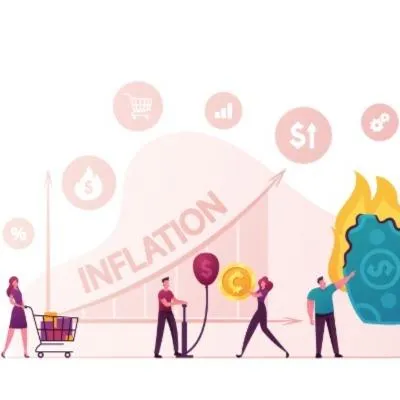OUR LATEST BLOG
Blog

Inflation at the Corner Store: Traffic Wars Between Nations and Their Ripple Effect on Local Prices
We often think of geopolitical tensions—blockades, shipping disruptions, and trade route conflicts—as distant headlines with little to do with our daily lives. But lately, those battles between nations have found their way into the most familiar places: our neighborhood markets. Prices are inching up, shelves are sometimes bare, and corner store owners are caught in a quiet crisis they didn’t start. What’s going on?
Let’s walk through how global "traffic wars"—conflicts that disrupt international transportation routes—are driving up prices on everyday goods and quietly changing the economics of your local shopping run.
The War on Waterways: Why Global Trade Routes Are Under Fire
Over the past couple of years, key global shipping lanes like the Suez Canal and the Red Sea have become choke points in a growing game of geopolitical chess. From missile threats near Yemen to cargo ship seizures and pirate activity, many major shipping companies are now rerouting to avoid conflict zones. What used to be a relatively direct path now often involves thousands of extra miles, added days—or even weeks—of transit, and significantly higher fuel and insurance costs.
It’s easy to think that has nothing to do with your local grocer, but the economic dominoes fall quickly. The cost of a container of canned goods that once traveled a quick route from Asia or Europe now balloons, and eventually, that cost lands on your receipt—item by item.
The Silent Rise: How Prices Creep Up Without Warning
What makes this issue especially insidious is that it doesn’t arrive with fireworks or breaking news. No one flips a sign or sounds an alarm when prices inch up. You just start to notice that the bag of rice that used to be $5.99 is now $6.79. Milk costs more. Pasta feels like a splurge. And no one seems to know why.
That’s because the pricing journey is long and quiet: importers pass their rising costs to distributors, distributors to retailers, and retailers to you. It’s not greed—it’s survival. Store owners aren’t trying to profit from crisis; they’re trying not to drown in it. What you’re seeing is the tail end of a global problem echoing into the everyday lives of families.
Essentials Are Hit the Hardest
Not all products are affected equally. The first items to feel the pinch are often household staples—cooking oil, flour, bread, and canned goods. These rely heavily on international supply chains. For instance, a disruption in the Red Sea affects palm oil exports from Southeast Asia, which in turn raises prices for cooking oils worldwide. Similarly, wheat shipments from Eastern Europe or fertilizers from conflict zones create a chain reaction that ultimately lands at your dinner table.
The harder it is to move something across borders, the harder it is to keep it affordable for local communities. And unfortunately, those essentials are often the most difficult to source locally.
Small Shops Are Struggling to Compete
Unlike big box stores, which have the resources to absorb some costs or keep larger inventories, local corner stores and independent grocers live week to week. They can’t buy in bulk. They can’t wait for discounts. When prices go up at the warehouse, they feel it immediately—and so do their customers.
As a result, small retailers often have no choice but to pass on costs as they come. You might notice reduced product variety, smaller stock levels, or your favorite brands disappearing altogether. These shops aren’t mismanaging their business; they’re simply not built to withstand global storms.
Local Customers Get Stuck in the Middle
The people who rely on corner stores the most—especially in low-income neighborhoods or remote areas—are the ones most affected. These communities often don’t have the luxury of traveling to big grocery chains or ordering in bulk online. For them, corner stores are not just convenient—they're essential. When those stores raise prices, it hits harder and hurts longer.
This is especially urgent in “food deserts,” where access to fresh, affordable food is already limited. A 15% price hike on cooking staples can be the difference between a full pantry and a skipped meal.
How Store Owners Are Adapting
Despite the uphill battle, many small business owners are showing resilience and creativity. Some are shifting their inventory toward locally sourced products to avoid global shipping issues. Others are selling smaller portions of items to keep them affordable, offering bundles to encourage loyalty, or teaming up with fellow store owners to negotiate better deals from wholesalers.
Transparency is becoming a key part of this survival strategy too. More owners are putting up handwritten signs or telling customers directly: “We’re not raising prices because we want to—we’re doing it because we have to.” That honesty builds trust and keeps communities connected even when times are tight.
What Can Be Done?
There’s no one-size-fits-all fix, but a few big-picture strategies could help cushion the blow. Governments and local authorities can offer subsidies or emergency funding to help corner stores stay afloat during volatile periods. Investments in local agriculture and domestic manufacturing can reduce reliance on imports. On a global level, strengthening and diversifying trade routes could ease the pressure on congested or high-risk shipping zones.
Most importantly, consumers can shift perspective. That extra dollar you spend at your corner store isn’t just about higher prices—it’s about supporting someone who’s fighting to keep your neighborhood fed, stocked, and cared for, despite forces far beyond their control.
Final Thought
Inflation at your local store isn’t just a result of economic trends or supply and demand—it’s a symptom of a world in flux. When nations clash and trade routes close, the aftershocks don’t stay overseas. They land quietly on our streets, in our markets, and on our kitchen tables. The next time you see a price jump at your corner store, know this: it’s not just a number. It’s the cost of a global storm—paid for, one receipt at a time, by people just like you.











